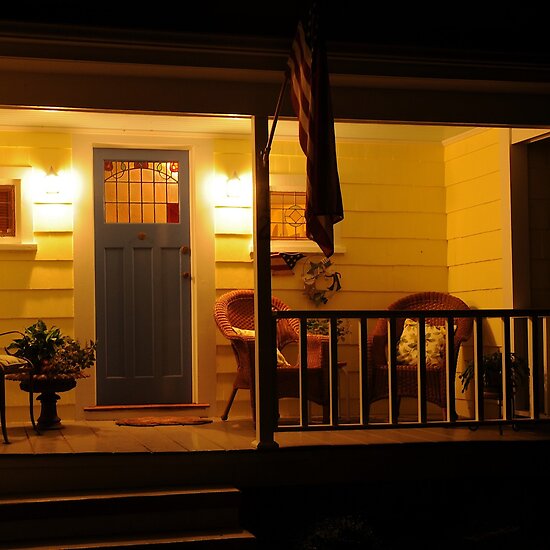Now, there is something important embedded in this exaggerated, but often true, caricature. The questions come up: what does it mean to have an older folk who requests our presence, who perhaps makes us feel guilty but needed? What is so special about a visit with them?
We can’t underestimate the power of our presence. A professor at HUC, Rabbi Maggie Wenig, wrote an amazing sermon about this many years ago. I want to share pieces of it with you now. It’s called "God is a Woman and She is Growing Older.”
God is a woman and she is growing older. She moves more slowly now. She cannot stand erect.
 Her face is lined. Her voice is scratchy. Sometimes she has to strain to hear. God is a woman and she is growing older; yet, she remembers everything.
Her face is lined. Her voice is scratchy. Sometimes she has to strain to hear. God is a woman and she is growing older; yet, she remembers everything.On Rosh Hashanah, the anniversary of the day on which she gave us birth, God sits down at her kitchen table, opens the Book of Memories, and begins turning the pages; and God remembers.
"There, there is the world when it was new and my children when they were young." As she turns each page she smiles, seeing before her, like so many dolls in a department store window, all the beautiful colors of our skin, all the varied shapes and sizes of our bodies. She marvels at our accomplishments: the music we have written, the gardens we have planted, the stories we have told, the ideas we have spun.
"They now can fly faster than the winds I send," she says to herself, "and they sail across the waters which I gathered into seas. They even visit the moon which I set in the sky. But they rarely visit me." There pasted into the pages of her book are all the cards we have ever sent to her when we did not bother to visit. She notices our signatures scrawled beneath the printed words someone else has composed.
Then there are the pages she would rather skip. Things she wishes she could forget. But they stare her in the face and she cannot help but remember: her children spoiling the home she created for us, brothers putting each other in chains. She remembers seeing us racing down dangerous roads—herself unable to stop us. She remembers the dreams she had for us—dreams we never fulfilled. And she remembers the names, so many names, inscribed in the book, names of all the children she has lost through war and famine, earthquake and accident, disease and suicide. And God remembers the many times she sat by a bedside weeping that she could not halt the process she herself set into motion…
…God is lonely, longing for her children, her playful ones. Her body aches for us. All that dwells on earth does perish. But God endures, so she suffers the sadness of loosing all that she holds dear.
God is home, turning the pages of her book. "Come home," she wants to say to us, "Come home." But she won't call. For she is afraid that we will say, "No." She can anticipate the conversation: "We are so busy. We'd love to see you but we just can't come. Too much to do."…
…[But] what if we did? What if we did go home and visit God? What might it be like?
 God would usher us into her kitchen, seat us at her table and pour two cups of tea. She has been alone so long that there is much she wants to say. But we barely allow her to get a word in edgewise, for we are afraid of what she might say and we are afraid of silence. So we fill an hour with our chatter, words, words, so many words. Until, finally, she touches her finger to her lips and says, "Shh. Sha. Be still."
God would usher us into her kitchen, seat us at her table and pour two cups of tea. She has been alone so long that there is much she wants to say. But we barely allow her to get a word in edgewise, for we are afraid of what she might say and we are afraid of silence. So we fill an hour with our chatter, words, words, so many words. Until, finally, she touches her finger to her lips and says, "Shh. Sha. Be still."Then she pushes back her chair and says, "Let me have a good look at you." And she looks. And in a single glance, God sees us as both newly born and dying: coughing and crying, turning our head to root for her breast, fearful of the unknown realm which lies ahead.
In a single glance she sees our birth and our death and all the years in between. She sees us as we were when we were young: when we idolized her and trustingly followed her anywhere; when our scrapes and bruises healed quickly, when we were filled with wonder at all things new. She sees us when we were young, when we thought that there was nothing we could not do… It was from her we learned how to comfort a crying child, how to hold someone in pain…
…It has been a good visit. Before we leave, it is our turn to take a good look at Her. The face which time has marked looks not frail to us now—but wise. For we understand that God knows those things only the passage of time can teach: that one can survive the loss of a love; that one can feel secure even in the midst of an ever changing world; that there is dignity in being alive even when every bone aches…

…God would prefer that we come home. She is waiting for us, ever patiently until we are ready. God will not sleep. She will leave the door open and the candles burning waiting patiently for us to come home.
**
There is more to this beautiful sermon - and you can read the rest here. The take away for us tonight, I think, is what it means to be one of God’s children and what it means to have a visit with our Creator. Like a relationship with a parent, depending on where we are in our lives, we may feel connected or we may feel distanced. We blame our Creator for our neuroses and our habits. We honor the shared values and moments of intimate laughter together.
To be God’s child is to be a human being, formed from the simplest cells – or the dust of the earth – and shaped into a work in progress. As we develop, mature, and assert our independence, it is important to still visit with our Creator. In those visits, we remember how to be better to one another and better to ourselves. Those visits with someone who has known you your whole existence provide important context that can impact our futures.
In those moments at God’s table, we may understand why the angels in the Torah are always appearing out of nowhere and visiting our ancestors and prophets. If we would just learn to show up like they do – to be present and to listen – if we would just make it our business to visit with one another and with the Divine – we’ll find the strength, comfort and love that innately we all crave. Then we may learn how not only to be God’s children, but to be God’s messengers; to take the lessons God taught us and enact them out in the world.









